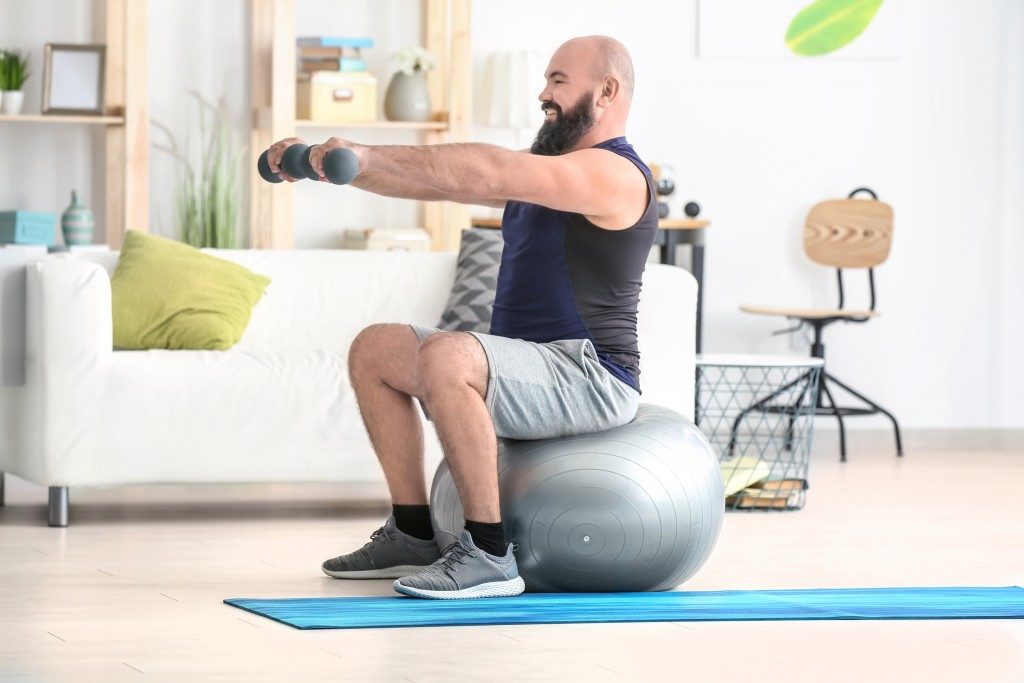The Pros
There are a lot of advantages to working out at home: For one, you don’t have to pay for membership which can be quite expensive, in fact, you can use the money you save from NOT having to pay for gym membership in order to buy proper workout equipment or gear for your home gym/fitness corner.
Furthermore, you don’t need to adhere to a dress code because there is none (although you still need to wear clothing that allows you to work out comfortably and safely). You can also save a lot of time since you won’t have to travel to and from the gym, and, speaking of time, you can do your workout anytime and not have to worry about closing or opening schedules.
And lastly, you won’t have to feel self-conscious since no one’s there to see you (apart from the people at home); the home workout option provides you with utmost privacy. However, working out at home is not without its disadvantages, too:
The Cons
One major disadvantage of working out at home is that you’re “at home”, that is to say that you’re in an area that you’re used to equating to “rest” and “being comfortable”, whereas going to the gym or fitness center puts you “in the zone” to work out.
Another problem is that there are a lot of things that can distract you at home, from kids to your phone, your television, your kitchen, and so on, that it may be all too easy to get sidetracked from your workout (or even entice you to skip working out at all).
Also, there’s the lack of gym equipment at home (or space for gym equipment), although there is always the option of choosing a workout regimen that doesn’t require equipment or only utilize very simple and affordable equipment like dumbbells, or even your stairs.
Lastly, home workouts lack supervision and guidance; unless, of course, you’ve hired a home trainer or there’s a fitness expert at home that’s there to guide you. Not having professional guidance can make you more prone to improper execution, which often results in injuries.
As such, you’ll want to take note of the following home workout safety tips to avoid getting injured while you’re trying to stay fit:
Safety Tips

First off, do your research by consulting a trainer or hiring a personal coach. While you can always try and follow online workout tutorial videos, a professional can help determine the best workout routine for you to do at home, and also help you in properly executing each exercise in your routine that can maximize its effects and minimize the risk of injury.
Forgetting or neglecting to do warm-ups and stretching is a common mistake both in and out of the gym, but it can result in extreme pain and injuries. It’s important always to warm up and stretch before and after a workout; stretching makes your muscles and joints while warming up increases your body temperature and improves blood flow. Consider getting stretching exercise equipment to allow you to safely and effectively do your stretching routine before the workout.
Last but not least, listen to your body. Remember that you’re not supervised, nor do you have a spotter. If your body’s signaling you to stop, it’s best to listen to avoid overexertion; know the difference between pushing your limit and breaking your body.
The Takeaway
Home workout is an excellent (and sometimes the only) option for people who want to stay fit and in shape without going to the gym and has a lot of advantages over the latter. And while it does have its disadvantages, proper guidance and discipline can help you minimize these advantages and also stay safe when you’re working out at home.
